The Precision Development Facility (PDF) was set up within the Millimetre Wave Technology (MMT) Group to provide the very high accuracy machining required in the development of sub-millimetre wavelength receiver technology. As well as providing close project support at RAL, the facility undertakes development work for industry and a variety of government institutions.
Recent investment in some of the very latest CNC (Computer Numerical Control) machine tools has allowed us to enhance our capabilities, maintaining our position as experts in all aspects of precision machining and novel component prototyping. The Millimetre Wave Technology PDF is made up of three sections:
Areas of Expertise
- Solving complex engineering problems
- Machining to accuracies better than five microns
- Developing and manufacturing complex novel geometries
The Precision Development Facility
- Precision turning, milling on customised lathes, micro milling machine and mini jig borers
- Precision micro drilling
- CNC Wire EDM
- Optical inspection and Non-contact measuring
- Design and manufacture of novel jigs and fixtures
- Electroplating and electroforming
- Diamond flat lapping and polishing
- Manufacturing microwave calibration loads and interferometer grids
CNC Nano-Machining
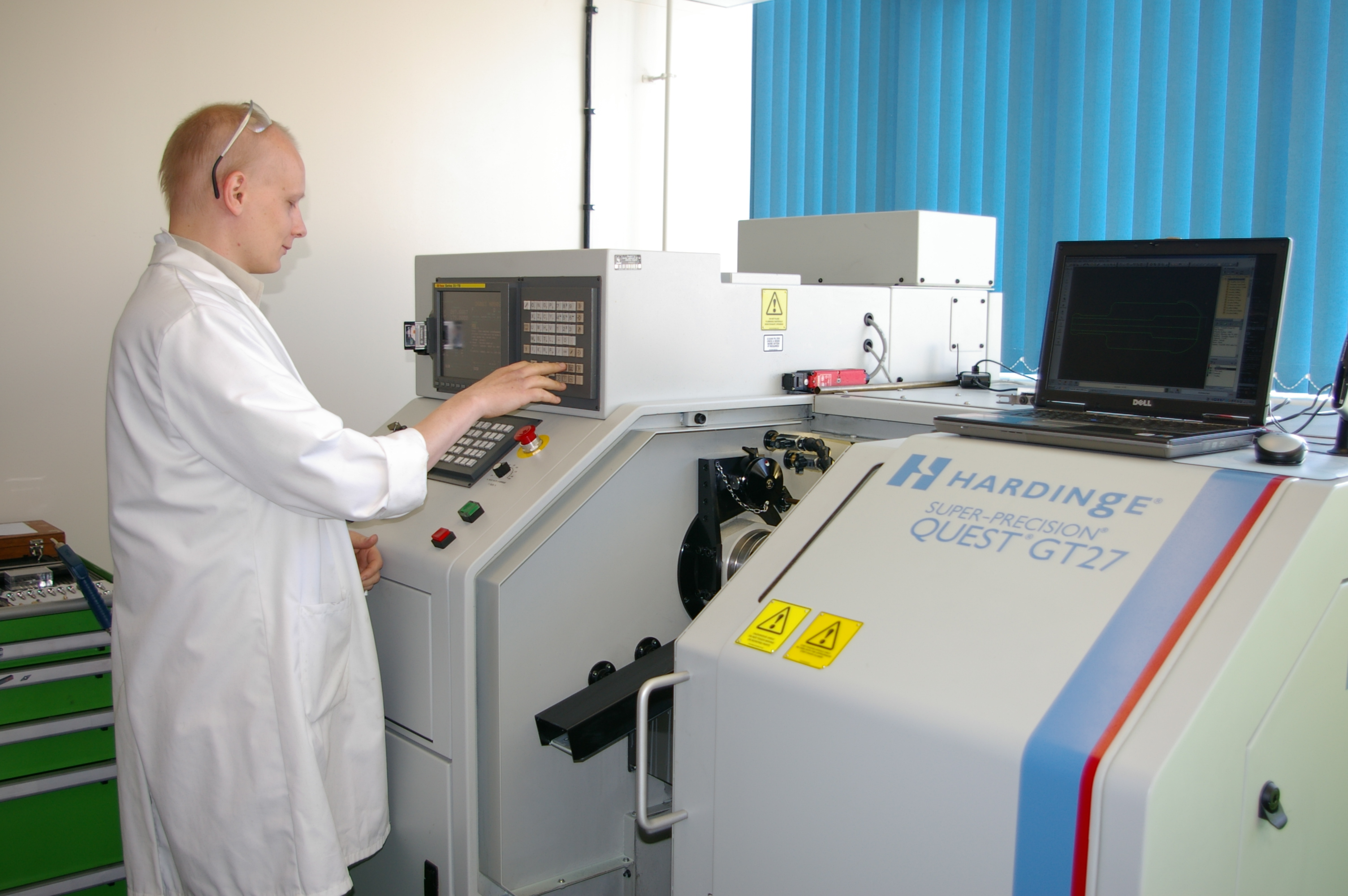
Utilising the latest in CAD/CAM technology, technicians are able to work directly from the designers 3D solid model using either Solid Edge or ONE CNC software systems.
These systems along with the high speed machine tools within the area enable us to produce components with complex geometry on a miniature scale to within 10 microns.
All Machines are networked allowing easy data transfer of programs from computer terminals to the machines. CNC Machines used:
- KERN pyramid nano CNC Mill (50,000 RPM positional accuracies +/- 0.3µm)
- Two HAAS Super Mini-Mills (15,000 RPM positional accuracy +/- 8 µm)
- KERN Micro 5 Axis CNC Mill (40,000 RPM positional accuracy +/- 1µm)
- Hardinge Super Precision Lathe (8,000 RPM positional accuracy +/- 5µm)
- Non-Contact Tool Pre-setters
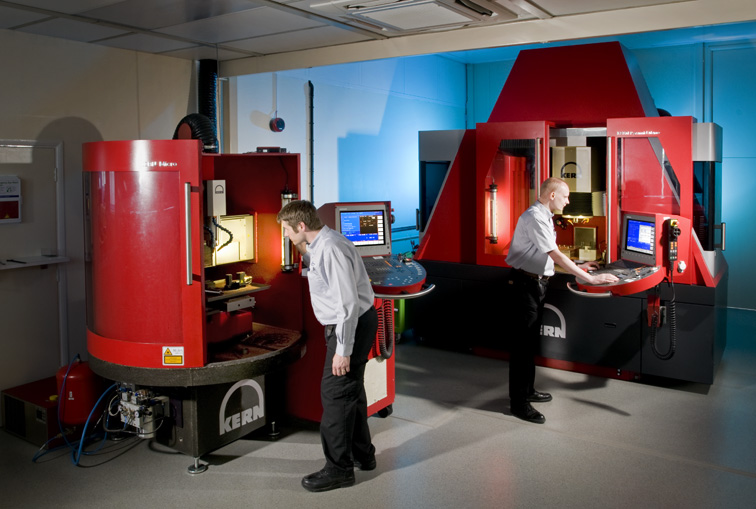
Capabilities:
- 120 µm holes pitched at 130 µm spacing. Wall thickness of 10µm in brass shim.
- Machining off axis parabolic mirrors.
- Machining curved channels and other features as small as 0.1 mm wide for millimetre wave devices.
Applications:
- High Speed machining used for development and manufacture of miniature components for the MMT Group and other commercial companies.
- Supporting the activities of CLIK spin out companies.
RAL Space Project Support
T
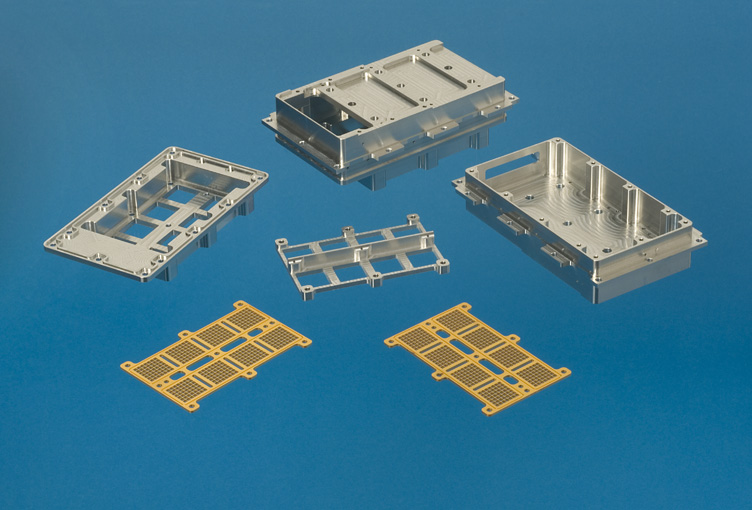
he Precision Development Facility (PDF) Project Support, forms part of the Millimetre Technology Group within the Atmospheric Science Division of RAL Space.
RAL Space has an active role in the design, manufacture and assembly of space flight and non-flight instrumentation. The Project Support area allows designers, scientists and engineers within the RAL Space community to brainstorm ideas where conceptual designs need to be transformed to working solutions within short periods of time.
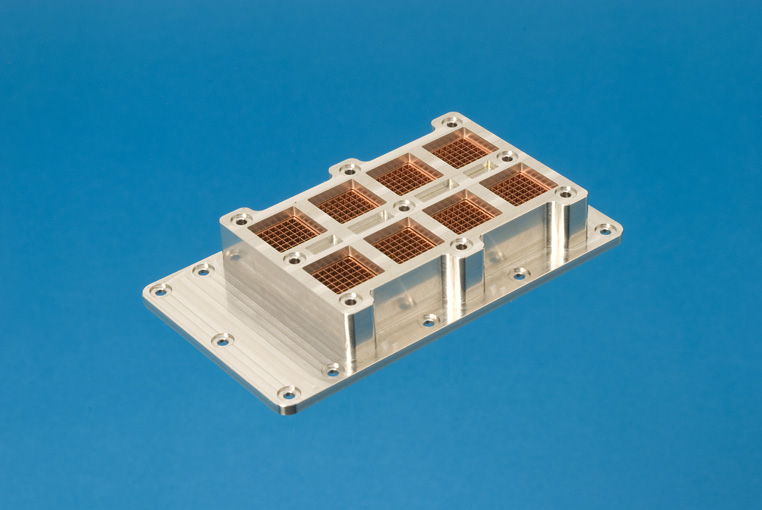
The areas primary objective is to provide a close support service to all projects within RAL Space in a number of key areas, including:
- Precision Manual Machining
- CNC Machining using off-line CADCAM Software
- Component Prototyping
- Inspection / Metrology
- Assembly
Laser Target Manufacture
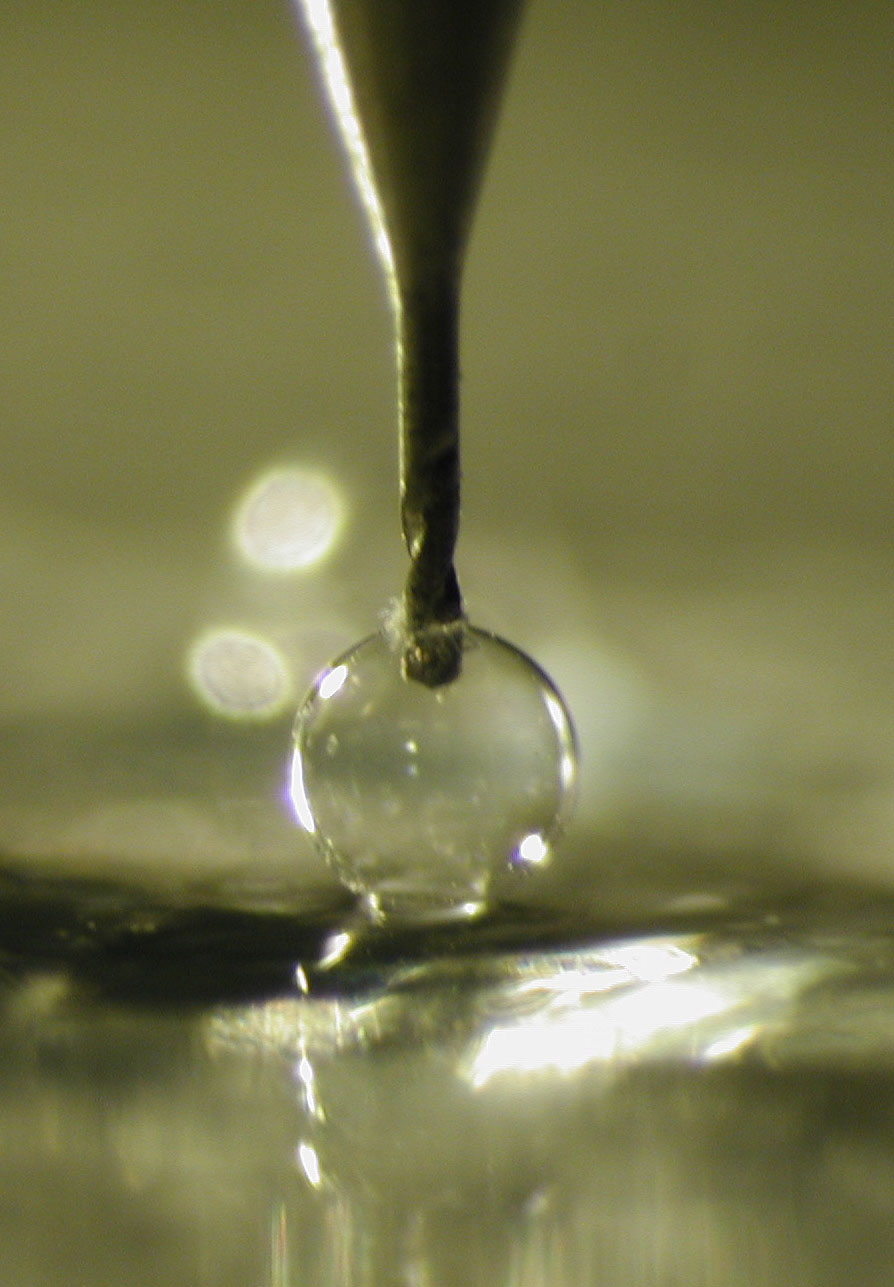
Over the past few years the Precision Development Facility (PDF) has been working closely with the Target Fabrication Group of the Central Laser Facility (CLF) to manufacture targets for experiments using high powered lasers.
This collaboration has led to the designs of many complex novel geometries being developed and manufactured by the PDF. Manufacturing capabilities include:
- Drilling holes as small as 100 microns.
- Manufacturing specialised jigs and fixtures for fabrication and assembly where alignment of components needs to be accurate at the micron level.
- Using novel manufacturing techniques to produce complex miniature structures.
- Machining components and lapping surfaces to produce optical levels of surface finish.
- Access to 5 axis CNC machine tools.
These miniature fuel pellets for researching nuclear fusion using high powered lasers are conical in shape and are made from pure gold. The cones are 950 microns high, 1 mm at the base tapering to a 50 micron tip. The gold wall thickness at the tip was 3 microns.
Assemblies can be as small as the eye of a needle. Handling and storage of such items as delicate as this is as important as the manufacturing.
Projects
The primary objective of the Precision Development Facility is to research and develop techniques used to manufacture miniature components used in high frequency millimetre wave detector systems. This includes expertise in the following:
The design and manufacture of mandrels for both smooth and corrugated millimetre wave feedhorns with the following features;
- Corrugations as small as 26 microns wide
- Surface finish as low as 0.1 µm Ra
- Concentricity better than 2µm
- Rectangular waveguides as small as 26µm x 90µm
The development and manufacture of millimetre wave devices with the following features:
- Rectangular wave guide channels as small as 20µm in size
- Dimensional accuracies better that 2µm
- Optical alignment better than 2µm
For more information please contact:
RAL Space Enquiries
